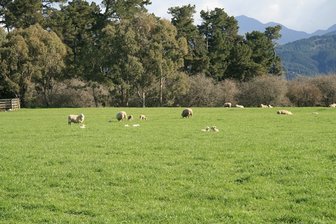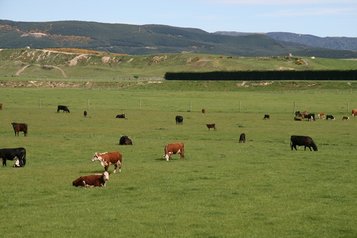Profiting from pasture: how to balance feed demand vs supply in spring
Lambing and calving are often a challenging time for pasture management, for many reasons. But decisions taken this month will have a direct impact on farm performance through the rest of the season, so if you’re looking to optimise pasture as your most cost effective source of feed in the months ahead, here are some tips that will help.
The amount of pasture cover you have across your farm at this time of the year fuels your farm’s growth and sets up the season. If covers fall below target, this not only creates an immediate shortage of feed but also a potential future shortage too.
That’s because ryegrass needs a certain amount of leaf to capture energy from the sun for photosynthesis and new leaf production. As the saying goes ‘grass grows grass’. If this process is compromised by pastures being too short, re-growth will slow down and you can end up with less pasture than you expected in four to six weeks’ time. This can end up costing you in terms of reduced animal production and/or extra supplements to fill the gap.
If pasture covers are above target, however, this can create its own problems. Ryegrass that is too long loses quality as dead plant material builds up in the base of the pasture; that in turn leads to pasture wastage, uneven grazing and often less than expected animal performance. Perhaps most importantly, re-growth after grazing can be poor, again posing the potentially costly risk of an unplanned feed deficit further down the track.
The secret to juggling these demands is to keep a close eye on how your pastures are growing, and be prepared to act promptly if it looks like you could end up with too little or too much feed.
If the amount of pasture available now is below target, for example, proactive strategies include feeding more supplements, if these are available. Reducing the immediate livestock demand for grass now will repay you later because it will allow growth to catch up.
Strategic use of nitrogen fertiliser will boost pasture growth rates - apply once soil temperatures reach 8 deg C or higher. The best response to N comes from your fastest growing pastures, so it’s worth first targeting short term annual, Italian or hybrid ryegrass and newly sown perennial ryegrass. Gibberlic acid in combination with N is another useful tool for further increasing pasture growth if your grazing rotation allows.
Also, depending on how covers are tracking, it may pay to consider early weaning, so that you can prioritise feeding your lambs.
At the other extreme, where a surplus of pasture is available, one option is to use stock which have not yet calved/lambed to graze over-long paddocks. On dairy farms, if you do have to graze these paddocks with milkers, one possibility is to mow afterwards to tidy up the poorer quality feed in the base of the pasture. This will give consistent re-growth and quality for the next grazing.

